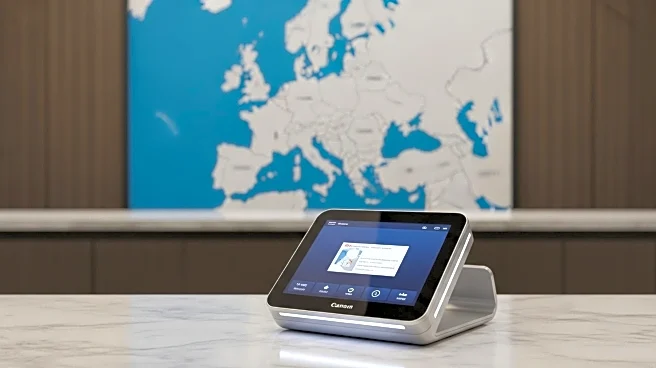What is the story about?
What's Happening?
The European Union is set to introduce a new digital Entry/Exit System (EES) across the Schengen Area starting October 12. This system will replace the traditional manual passport stamping with a fully electronic process aimed at enhancing border security and monitoring visa-free stays. Non-EU nationals, including Australians, will be required to create a digital record upon their first entry into the Schengen zone. This involves submitting fingerprints, a facial photograph, and answering standard entry questions. Once registered, the digital profile will be valid for three years, allowing for quicker processing on subsequent visits with only a fingerprint or photo check required. The Schengen Area comprises 29 countries, including France, Italy, and Germany, where travellers can move freely without additional border checks.
Why It's Important?
The implementation of the EES is significant as it represents a major shift in how border security is managed within the Schengen Area. For Australian travellers, this change could mean longer processing times at airports and land crossings, particularly during the initial rollout phase. The system is designed to automatically track the duration of stays, which could impact travellers who overstay the 90-day limit within a 180-day period, potentially leading to fines, detention, or entry bans across the EU. This development underscores the EU's commitment to strengthening border security and could influence travel patterns and planning for non-EU nationals.
What's Next?
The EES rollout will begin on October 12, with full implementation expected by early 2026. As the system is introduced, travellers may experience delays as officials adjust to the new procedures. It is anticipated that the system will streamline border crossings in the long term, but initial teething problems are expected. Travellers and travel advisors will need to stay informed about the new requirements to ensure compliance and avoid potential penalties. The EU's move may prompt other regions to consider similar digital systems for border management.
AI Generated Content
Do you find this article useful?













